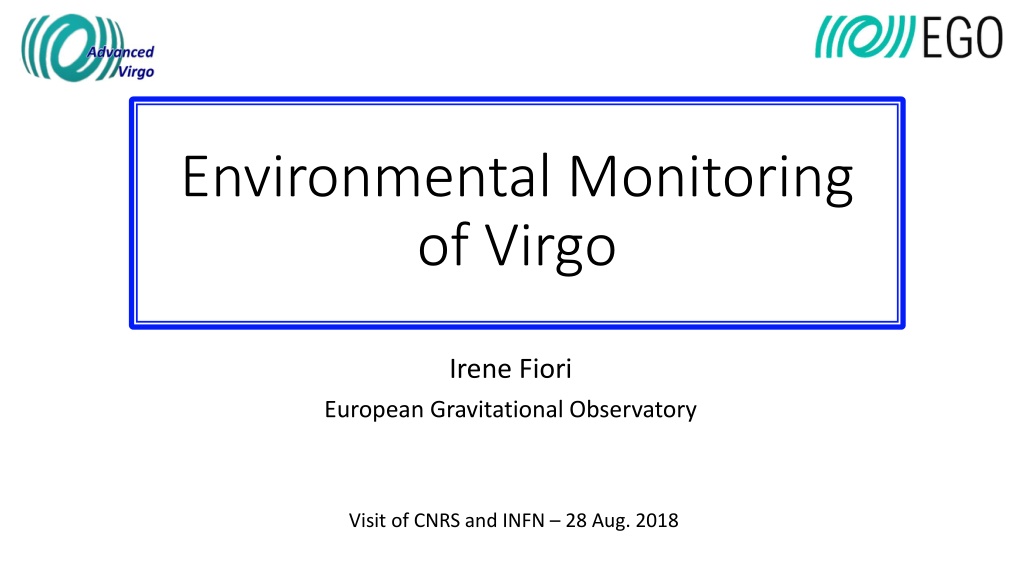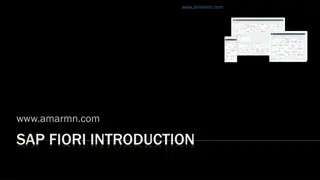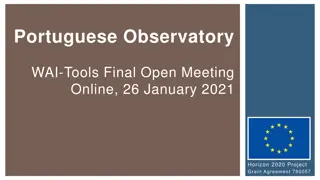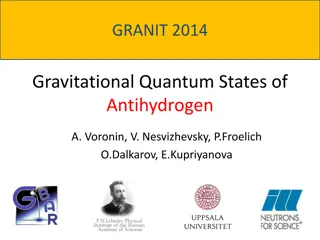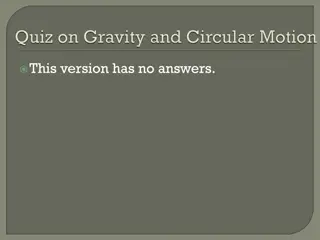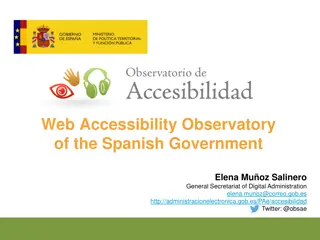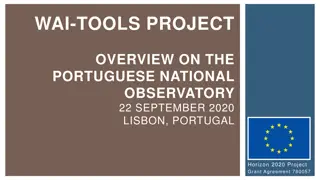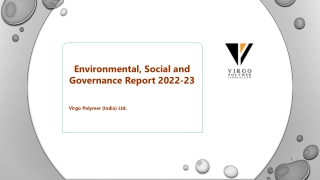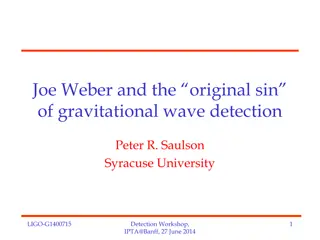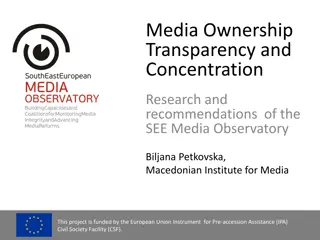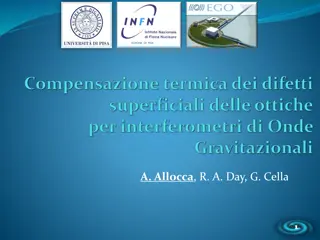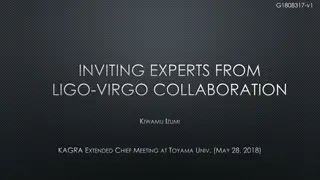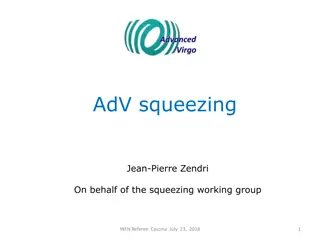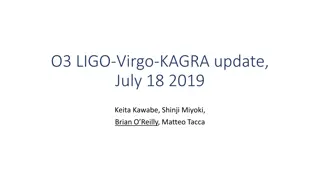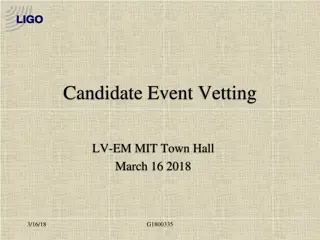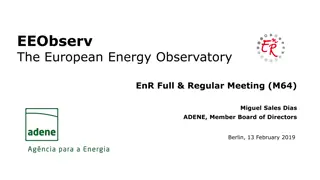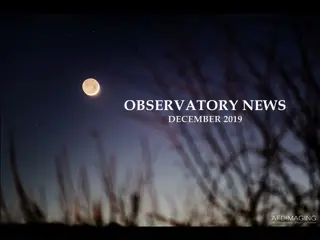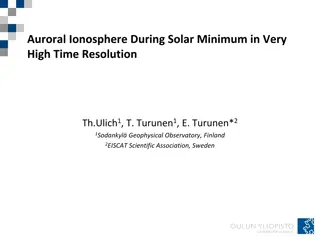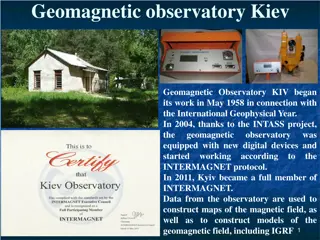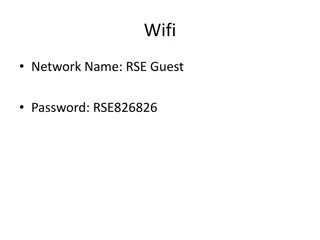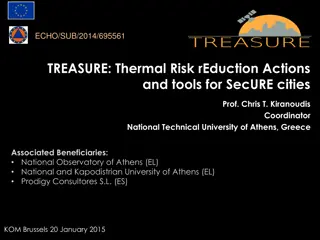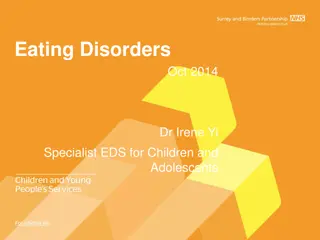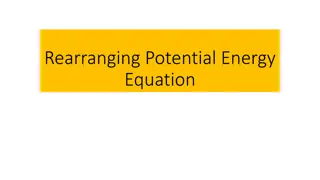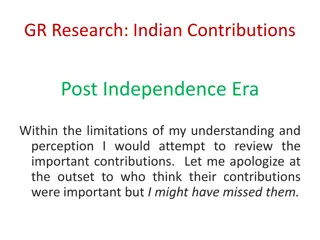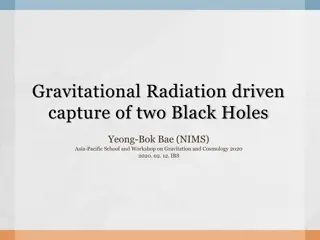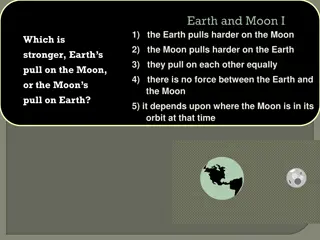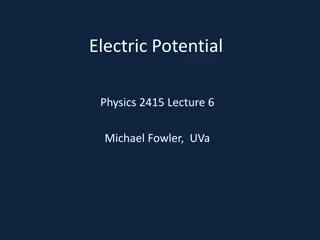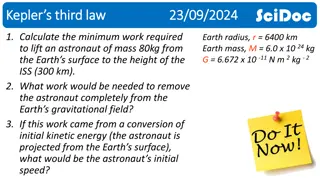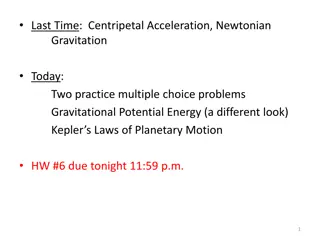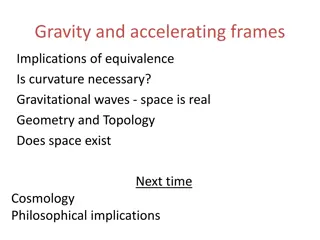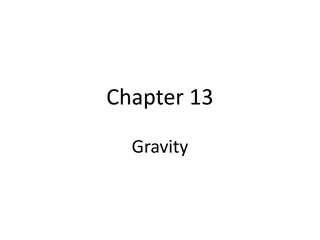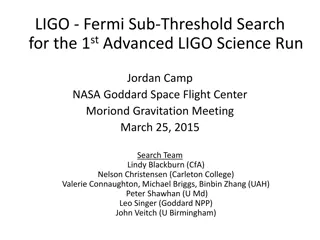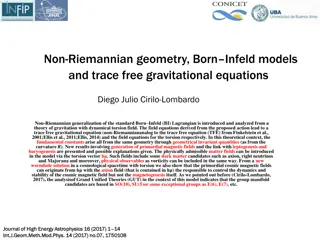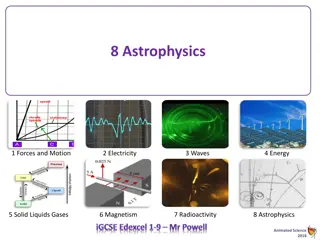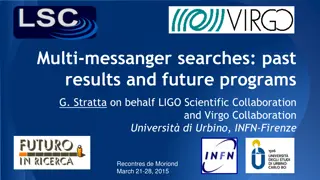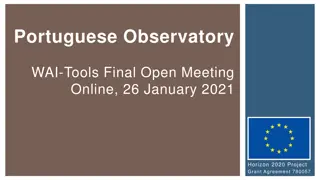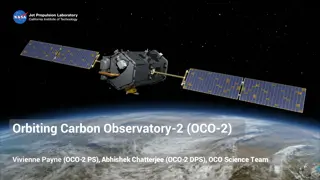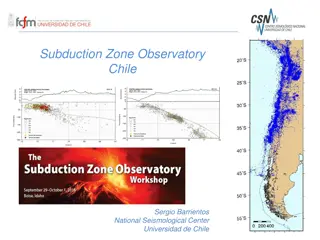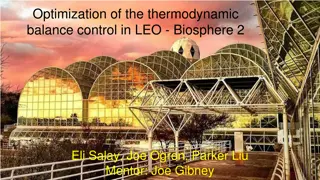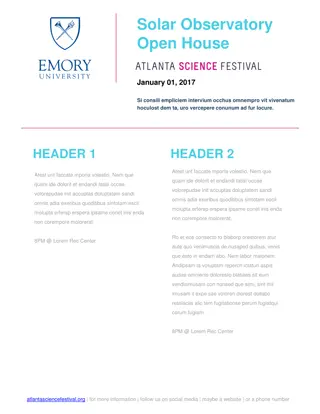Environmental Monitoring of Virgo Irene Fiori European Gravitational Observatory Visit
The environmental monitoring of Virgo at the European Gravitational Observatory involves studying various environmental influences on the interferometer, such as electromagnetic fields, radio waves, ground motion, and mechanical vibrations. Sensors are strategically placed in experimental halls to detect disturbances, aiding in tracking noise sources and implementing mitigation actions to reduce coupling to the interferometer. Additionally, the monitoring includes measuring the interferometer coupling to ambient noise through controlled injections of sound, vibrations, magnetic fields, and radio frequency signals for noise budget projections and validation of gravitational wave events.
Download Presentation

Please find below an Image/Link to download the presentation.
The content on the website is provided AS IS for your information and personal use only. It may not be sold, licensed, or shared on other websites without obtaining consent from the author. Download presentation by click this link. If you encounter any issues during the download, it is possible that the publisher has removed the file from their server.
E N D
Presentation Transcript
Environmental Monitoring of Virgo Irene Fiori European Gravitational Observatory Visit of CNRS and INFN 28 Aug. 2018
Outline Motivation Sensors ENV studies (examples) Challenges (towards next generation of GW detectors) 2
Environmental influences on GW interferometer Extremely sensitive detector (GW150914 BH-BH signal produced L / L 10-21) Several type of external disturbances can couple Electro Magnetic fields Act on mirror MAGNETS Radio waves (6MHz, 8MHz, 56MHz) Photodiodes RF modulated used for angular and longitudinal controls (heterodyne) Slow ground motion Seism & Sound excite vibrations of vacuum pipes and tanks Excite mechanical modes of mirror suspension and benches Imprint phase noise on spurious scattered light beams 3
Sources: self-inflicted Electronics Water chillers Vacuum pumps Air ventilation 5
Environmental sensors Network of probes in experimental halls 200 fast sensors 1000 slow sensor INFN INFN - - Napoli Napoli TYPE and LOCATION is such that ENV probes senses disturbances with much larger SNR than ITF Lightning sensor Weather station 6
Noise hunting! Track and locate sources Correlate noise in ENV probes and ITF Many analysis tools, online or on-demand ( DetChar) often it requires further measurements and tests, and sniffing around Mitigation actions Mitigation actions Silence the source Reduce coupling to ITF VETO data segments (until problem fixed) 7
Measure ITF coupling to ambient noise Hrec We inject controlled and loud noise Sound, Vibrations, Magnetic, RF This transfer function is used project the ambient noise (Noise Budget) Microphone Microphone Identify critical couplings require fixing Validation of candidate GW events ( DetChar) Coil for magnetic injections Projected contribution Projected contribution Loudspeakers Loudspeakers 8
Challenges towards AdV+ and third generation Newtonian Noise Newtonian Noise Fluctuations of gravity field close to Mirror Test masses Both Seismic and Atmospheric NN NN will limit AdV+ sensitivity at low frequency. Actions: Actions: 1) Noise subtraction algorithms 2) Mitigation of sources (especially sound inside experimental buildings) Ongoing: testing seismic arrays Dense array of seismometers deployed inside Virgo Terminal building (Jan-Feb. 2018) 9
Challenges towards AdV+ and third generation Study of seismic fields propagation through the site Study of seismic fields propagation through the site Example of case study Dense seismic array of 100 geophones deployed in August 2016 (Nikhef Innoseis) 2D Tomography maps of shallow shear waves velocity structure beneath the Virgo gravitational wave antenna, from dense-array recordings of regional earthquakes. Sonja Gaviano Master Thesis, G.Saccorotti - INGV Recordings include the Earthquake of Accumuli (RI), Mag.6.2, Aug 24 2016 and after-shakes More studies: Soumen Koley et al, Nikhef https://doi.org/10.1190/segam2017-17681951.1 10
Challenges towards AdV+ and third generation Geo-science studies (more): in collaboration with INGV (agreement signed Oct. 2018) Seismic fields from sources close to the site (Pontedera s wind turbines park - Saccorotti et al. BSSA 101, No. 2, April 2011) Earthquake Early Warning alert (ASPIS project, cofounded by Regione Toscana) Preserve the Site noise climate: Set requirements of noisy emissions from new installations in the area (agreement signed with local authorities, 2011) So far it saved us from: more wind parks, one motor speedway, few earth quarries Global Earth noise can affect the World Network of Interferometers and mimic GW candidates or stochastic GW (Schumann fields, gigantic lightings, geomagnetic pulsations, solar activity, large cosmic ray showers) Improving the site monitoring (e.g. external magnetic station in preparation) Cosmic Ray detector on site Collaboration agreement with Radio-frequency and EM sensors networks 11
